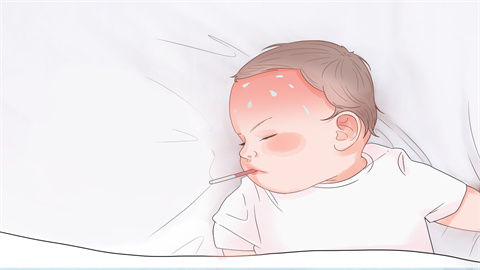What medications can children take for colds and fever?
Generally speaking, fever refers to an elevated body temperature. Determining which medications to use for children with a cold and fever depends on the underlying cause. Common causes include dysregulation of body temperature, physical activity and emotional excitement, acute upper respiratory tract infection, acute bronchitis, and pneumonia. If symptoms persist, prompt medical attention is advised. Detailed analysis is as follows:

1. Dysregulation of Body Temperature
Children's thermoregulatory centers are not yet fully developed, making them susceptible to environmental temperature changes, such as sudden weather changes or improper clothing, which may lead to thermoregulatory imbalance and subsequent fever. In such cases, medication is generally unnecessary; symptoms can be relieved by appropriately adding or removing clothing.
2. Physical Activity and Emotional Excitement
During intense physical activity or emotional excitement, children's metabolic rates increase, generating more body heat. If heat dissipation is inadequate, body temperature may temporarily rise. In these situations, medication is generally unnecessary; resting promptly after activity and staying hydrated can help alleviate fever symptoms.
3. Acute Upper Respiratory Tract Infection
An acute upper respiratory tract infection is usually caused by a viral infection. After invading the respiratory tract, the virus stimulates an inflammatory response in the body, causing fever. Symptoms typically include nasal congestion, runny nose, and cough. Medications such as Lan Qin Oral Liquid, Wind-Cold感冒Granules, and Isatis Root Granules should be used according to medical advice.
4. Acute Bronchitis
Acute bronchitis is typically caused by infection with pathogens such as viruses, bacteria, or mycoplasma. Bronchial inflammation leads to increased respiratory secretions, causing fever and cough. Symptoms may also include sputum production, shortness of breath, and difficulty breathing. Medications such as Citrate Pentoxyverine Tablets, Dextromethorphan Hydrobromide Tablets, and Compound Salbutamol Sulfate Aerosol should be used according to medical guidance.
5. Pneumonia
Pneumonia is commonly caused by various pathogens, including bacteria, viruses, and mycoplasma. These pathogens invade the lungs, triggering an inflammatory response that raises body temperature, causing fever and cough. Symptoms typically include chest pain, cyanosis of the lips, and listlessness. Medications such as Cefuroxime Axetil Tablets, Ambroxol Hydrochloride Oral Solution, and Amoxicillin Clavulanate Potassium Tablets can be used under a doctor's guidance.
In daily life, it is important to encourage children to develop good habits, such as regularly ventilating indoor spaces and maintaining good air circulation. Additionally, encouraging children to engage in moderate outdoor activities can help strengthen their physical condition and enhance immunity.









